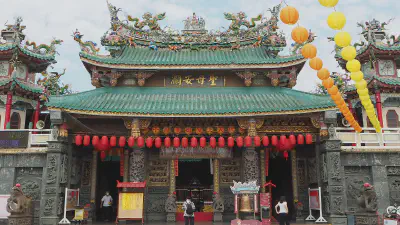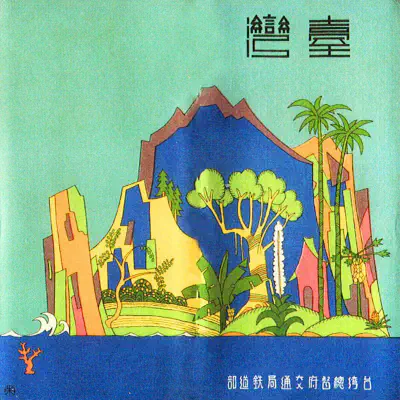The following piece was first published in the SEA Globe in 2019. You can read the original here.
I saw our neighbour every day. As I stood over the sink, washing dishes, she was there in the alleyway between our apartments, hanging clothes on the bamboo drying racks.
Sometimes she glanced through the window, and I smiled. She never returned my smile. She just turned away, her shoulders hunched, and went back into the dark of her apartment.
Our neighbour had colonised the space between our apartments. It belonged to us both equally, but she had taken it for her own. She had built makeshift shelves and cupboards to block our back door. She spent hours out there, arranging things, hanging clothes, glaring through our window.
Early mornings, she swept the back alley clean and left the sweepings outside our apartment. She dragged things she had no use for and piled them outside our kitchen window: old bits of furniture, sheets of glass, broken plastic toys. We picked up her rubbish and put it in the public trash cans only a few metres away.
Sometimes, when I passed her apartment, I raised my hand to greet her. In the mornings I asked her if she had eaten breakfast, the usual greeting in Burmese. It seemed only right we should be neighbourly. But it was no good. She didn’t like us. She never replied.
Our apartment was on the ground-floor in a crumbling block in the neighbourhood of Bahan township, Yangon. It was a fast-developing area. But our part of the neighbourhood had been overlooked by developers. Set back behind a busy intersection, the area was shabby and uncared for. On Google Maps, the satellite images showed the rusted roofing of the apartment blocks, anomalous among the new developments.
It was so neglected, nobody had even bothered to name the streets. What passed for our address was more a set of instructions for finding us. “Apartment six, block eight, on the third street behind the hotel,” we told taxi drivers.
There were three apartment blocks. Seven stories high, they sloped up the hill in parallel, each one split in two by a back alley. Satellite dishes clustered on the walls. Air conditioning units dripped water. Trees and plants grew out of the broken concrete. A fractured pipe on the upper floors meant that water cascaded continually down the wall outside our bathroom. Ropes hung from the upper apartments, attached to bulldog clips tied to the ends. In the morning, the delivery man clipped copies of state newspapers such as Myanmar Alin (The Light of Myanmar) and Kyemon (The Mirror) to the ends of the ropes, and the residents reeled in the daily news.
Our apartment was at the very end of the middle block, at the top of the hill. In the evenings, as I cooked, the local kids clustered round the kitchen window and asked me questions in Burmese: Where was I from? What was my name? What was I cooking? What were my favourite Burmese foods? Why did I have a beard? Was I a Muslim? Why did I have a beard? What were my favourite Burmese foods?
There were few other foreigners in the area. Two quiet Australian theologians had an apartment in the block next door. A Japanese businessman lived nearby. Sometimes I saw him in the local tea house, scrolling through the financial news on his mobile phone. I worked in a nearby graduate institute, and some colleagues from Germany, Russia, Ukraine, and America lived in the same area. Compared with the two or three thousand people who lived in the neighbourhood, we were few in number, still the object of interest, still worthy of comment.
In downtown Yangon, it was a different matter. There were foreigners everywhere. Investors took over old colonial apartments, refurbished them, and let them out at a premium to Westerners. With a bit of capital, you can fancy up an apartment, put in the things that foreigners like, and charge much more than a local tenant would pay. In the process, local people were priced out, and downtown Yangon was being slowly gentrified.
I leaned over to sniff at the contents of the bowl. It almost smelled good.I had an urge to taste it, but I resisted. ‘I don’t know what it is,’ I said. ‘It smells strange.’
It is easy to see where Westerners live in Yangon. All you have to do is stand outside the apartment blocks at night and look up at the windows. You can tell where the foreigners are by the colour of the light that streams out onto the street. Westerners like warm, yellow-hued light bulbs. Burmese people like their light-bulbs cool, tinged with blue.
Downtown, the light coming from Yangon’s colonial-era apartments was slowly turning from blue to yellow. And we were no different. After we arrived in Yangon, we scoured the supermarkets for yellow light bulbs. We changed out the cool lights in the apartment for warm ones, shifting our home along the colour spectrum, shorter wavelength to longer. In Bahan, we were the advance foot-soldiers of a rag-tag invading army, colonising the high-rises with our strange habits, our incompetent Burmese, and our yellow light bulbs. Our neighbour was right to mistrust us.
The porridge arrived one Saturday afternoon. My partner went into the kitchen to make a cup of tea. I was lying on the sofa, reading a book. A voice came from the kitchen. ‘Come and look at this.’
On the work surface, just inside the window, was a bowl made of soft, red plastic. It was not our bowl. And inside was something brown and greasy. It looked like vomit.
We always left the window unlocked, sliding closed the broken mosquito net when we needed a bit of privacy. When we found the porridge, the mesh was closed. Somebody must have quietly slid it open, placed the bowl of porridge on the work surface, and slid it closed again. The quietness was unsettling. Nothing in Myanmar was ever quiet.
I leaned over to sniff at the contents of the bowl. It didn’t smell like vomit. It was greasy, a little grainy. I caught the scent of cooked beans. It almost smelled good. Or if not good, faintly savoury. I took a fork from beside the sink and prodded the surface. I lifted a lump onto the fork and put it to my nose. I had an urge to taste it, but I resisted.
‘I don’t know what it is,’ I said. ‘It smells strange.’
I put the fork back in the porridge and stirred it. At the bottom of the bowl was a black, fibrous sludge. It smelled of oil and badness.
We looked at each other. ‘Don’t eat it,’ my partner said.
‘ No,’ I replied. ‘I’ll get rid of it.’
I took the bowl and emptied the contents into the toilet. I flushed the porridge away, came back into the kitchen and washed the bowl at the sink. Not knowing what to do with it, I put it back out through the window on the, resting in sill. Somebody might want the bowl back, I thought. I pulled the mosquito screen closed.
That afternoon, I felt restless. I asked my partner if she wanted to come to Talk of the Town. The café had recently opened, and we went there regularly. It was shiny and well-lit, a sign that the creeping gentrification of Yangon was reaching even into our area. It sold cappuccinos and frappés and international food: nasi goreng from Indonesia, burgers, pasta, Burmese mohinga fish soup at prices few in our neighbourhood could afford.
None of our neighbours went to Talk of the Town. It was not just the prices that excluded them. It was the food, the culture of the place, the fierceness of the air-con. But for us, it was an oasis of familiarity, a respite from the noise and the heat.
‘I’ll stay here,’ my partner said. ‘You go.’
I took my laptop and went to the café. I ordered a cappuccino. The Singaporean owner came over to chat. When he drifted away, back to the counter, I opened my laptop and started work. But I couldn’t concentrate. I was thinking about the porridge. About where it had come from. About the quietness with which it had been left.
My phone buzzed. It was a message from my partner. ‘Something strange has happened,’ she wrote. ‘There’s something in the toilet. A nail and a screw.’
I finished my coffee and went home. There, in the toilet bowl, gleamed a small silver screw. Next to it was a rusted, bent nail. I reached in and pulled them out. And then, because I didn’t know what else to do with them, I threw them in the trash.
The porridge seemed more threatening now. The red bowl was still resting on the windowsill. I went outside, picked up the bowl, and threw it into the public rubbish bin in the street.
I spoke to Burmese friends about the porridge. They confirmed our fears: it was black magic. The hairy sludge was the give-away. In Burmese, it is called apin. The word literally means something that stops something up, something that blocks or wedges. It is used to refer to any foreign body that, insinuated into the body of its victim, causes harm. In Burmese Supernaturalism, the anthropologist Melford Spiro writes that apin is ‘usually human hair, but sometimes leather, raw beef, or animal sinew.’ When ingested, according to Burmese belief, the apin multiplies. It fills the victim’s stomach, leading to excruciating pains, sometimes to death. Since the end of military rule in Myanmar, there has been a popular resurgence of witchcraft. Burmese magic is of two kinds: white magic, known as a hte’ lan pyin nya (‘the knowledge of the higher path’) and black magic, known as au’ lan pyin nya (‘the knowledge of the lower path’). Both were popular amongst the ruling elite during the years of military rule.; but strict censorship rules kept a lid on the popularity of magic amongst the general population. The relaxation of censorship has led to a new golden age for Burmese magic. How-to publications and courses in the practice of magic are flourishing. And the Burmese-language Facebook group dedicated to knowledge both higher and lower paths has close to sixty thousand members.
Fear of apin makes people mistrustful of taking food from strangers. Even in the cities, parents tell their children living away from home for the first time that they shouldn’t accept food from strangers, out of fear of black magic. Did you eat the porridge? our friends asked. I told them we threw it away. They told us that we did the right thing.
The week after the porridge arrived, I caught the bus to my weekly Burmese lesson. My teacher, Sayama T, ran a language school in the neighbourhood of Hlaing township. For my lesson, I prepared a list of words relating to magic and witchcraft, copying them from my dictionary into my notebook in English and Burmese. In the lesson, I explained what had happened in fragmentary Burmese sentences. Sayama T listened carefully. When I got to the end of the story, she too asked if we had eaten the sludge. I told her we hadn’t. She said we were lucky. Once she had eaten a pau’ si, a steamed bun, prepared by an expert in black magic. *Pau’ si *are available everywhere. They have different fillings: meat, sweet molasses or bean paste. But when Sayama T bit into the bun, it was full of apin. She swallowed some of the black, fibrous hair before she realised. She threw the bun away.
Later that day, she fell ill. Her belly distended. She became delirious, broke out in a fever, had strange hallucinations. Her husband and a relative took her to see a monk. As they approached the threshold of the monastery, her body recoiled in disgust. They had to carry her in there by force.
But the monk was powerful, skilled enough to resist even the strongest black magic. He recited verses of protection in the sacred Pali tongue over a glass of water, and forced her to drink. Sayama T swallowed the water. Then she doubled over and vomited up a whole bellyful of black fibre. With the apin was all gone, she was cured.
Sayama T said I was lucky I had the foresight not the raise the fork to my lips and to eat. I had done the right thing in throwing away the porridge. But she cautioned me to be careful. Somebody was out to get us, she said. If there were any more incidents, I should call her straight away. She had the monk’s phone number. I could call any time and she would summon him to come to my aid.
I thanked Sayama T and headed home.
As we were leaving, I thought of our neighbour. I thought she would be glad to see the back of us.
We suffered no ill effects from the strange porridge, other than a lingering background unease. A week passed before we saw the bowl again, or one like it. My partner spotted it first, outside our neighbour’s house, propped up by the back door in full view of our window. We told ourselves it was a coincidence. We reminded ourselves there are many red plastic bowls in the world. Perhaps it was a different bowl, bought from the same local store. But the way it was propped there, in full view, seemed like a deliberate sign or a provocation. We felt suspicious, and we felt guilty for our suspicion.
By evening, the bowl had gone.
In the months that followed, our neighbour continued to extend her territory behind our apartment. When she caught my eye as I washed up, I went on smiling at her. She went on turning away, bristling with hostility. Periodically, we removed her rubbish when it piled up in front of our windows. It was annoying. But we put up with it. And although we did not want to feel suspicious, over time, our suspicions hardened. There was no way of telling who had slid open the mosquito screen and placed the porridge on our work surface. But who else was the porridge from, if not from her?
But whoever it was, it was hard to blame them. We ourselves were apin. We were foreign contaminants in the body of the community where we had made our home. We drank cappuccinos and ate Singaporean food. We had flashy Macbooks and strange jobs. We spoke bad Burmese, if we spoke any at all. We represented gentrification, rising property prices, increased hardship.
Sometimes we wore longyis, a Burmese version of a sarong, slumming it at the fried rice cart in the evenings, standing in line and paying our twelve hundred kyats [the Myanmar currency, equivalent to about US$0.78] with the other local punters. But we didn’t belong. And we were multiplying. A few years before, there were none of us. But every year, there were more of us, with our bad Burmese and our yellow light-bulbs.
After eight months, our contract in Yangon was up. We ate fried rice for a final time at the street stall. We visited the tea stall and sat watching the monsoon rains whilst we drank a final cup of tea. We called into Talk of the Town and wished the owner and his staff well. Then we packed our bags and called a cab to the airport.
As we were leaving, I thought of our neighbour. I thought she would be glad to see the back of us. Whether or not she was responsible for the porridge, as our taxi headed away from the housing block for a final time, I thought of how it must have been a relief for her to see us go. And if the porridge was her doing, perhaps she consoled herself with the thought that the magic had worked.
The apin expelled from the body of her community. The sickness passed. The lights from the apartments turning back from yellow to blue.
Photo © Will Buckingham 2019.



